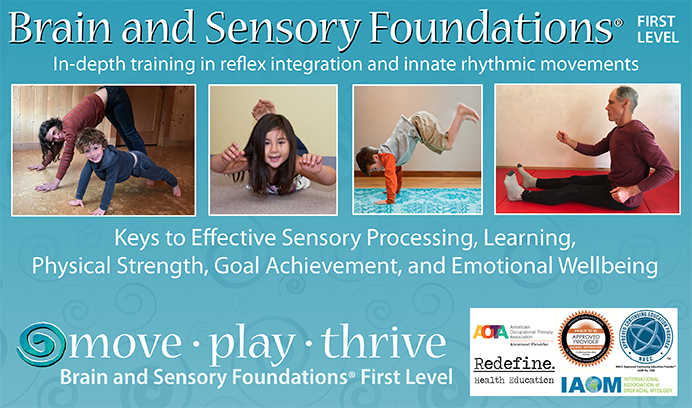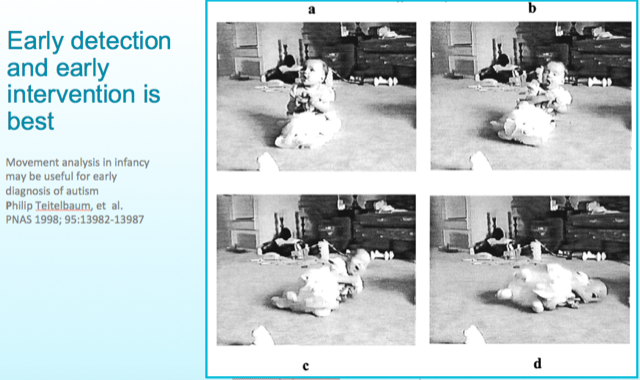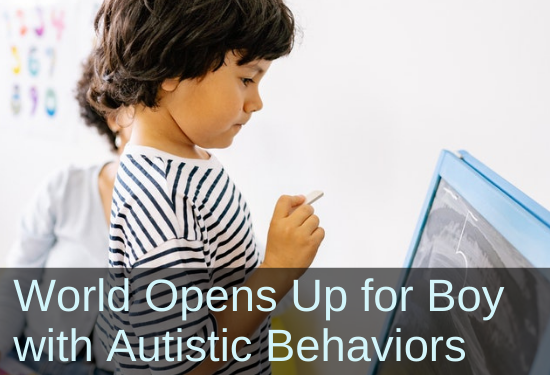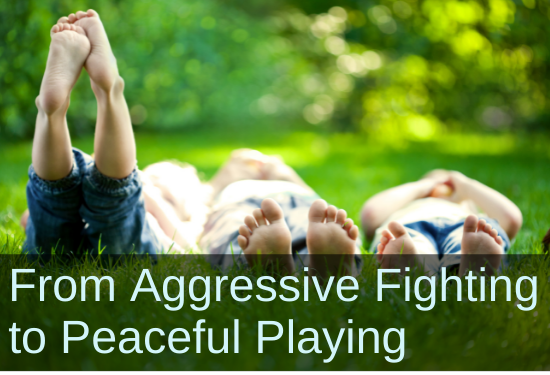Greetings,
Imagine being 57 years old, struggling all through life with autism, and now the symptoms are "almost not noticeable" to family members. In this newsletter, you will find this story, more striking case studies, and research on autism as it relates to sensory-motor issues.
When I started using innate neurodevelopmental movements over 15 years ago, parents and professionals consistently reported that these movements were helping with sensory issues, physical pain, sleep issues, emotional regulation, and anxiety--these are the very challenges that individuals with autism (ASD) commonly experience. The innate movements from the Brain and Sensory Foundations courses offer profound help for those with ASD and can play a key role in recovery.
For Early Detection and Long-Standing ASD
Among the great blessings of innate movements is that they can be used for early detection of ASD (see remarkable photos and research below). These special movements also appear to be highly useful at any age for helping with ASD symptoms. For example, a wonderful email recently came from the wife (an occupational therapist) of a 57 year old:
"My husband has been doing the rhythmic movements for a year now including the Moro reflex [from the Brain and Sensory Foundations course] and the changes are incredible. After 57 years of living with ASD (undiagnosed), and thinking he was mad and why don't things work out for me? He is now almost anxiety free and the patterns of repetitive behavior have reduced so significantly it is almost not noticeable."
Wow!
I love being able to share this hopeful message with you.
Please pass this positive news to anyone who can benefit!
Best wishes,
Sonia
The above photos show an infant who has learned to sit independently, but she has not developed protective extension.Her development has been compromised as we can see here because she is not able to use her arms to help her stay upright when her body is tilting. The resulting fall creates additional agitation and possible injury, which could contribute to a further hindrance in development. See full study here.
There is a multiple decades-long history of research showing that autism is associated with motor control issues. Here are some noteworthy studies:
- Teitelbaum, P., Teitelbaum, O., Nye, J., Fryman, J., & Maurer, R. G. (1998). Movement analysis in infancy may be useful for early diagnosis of autism. Proceedings of the National Academy of Sciences of the United States of America, 95(23), 13982–13987. https://doi.org/10.1073/pnas.95.23.13982
- Teitelbaum, P., Teitelbaum, O. B., Fryman, J., & Maurer, R. (2002). Reflexes gone astray in autism in infancy. Journal of Developmental and Learning Disorders, 6, 15-22. Find a copy of this study here:
https://www.moveplaythrive.com/images/pdf/reflexesgoneastray.pdf - Kohen-Raz, R., Volkman, F. R., & Cohen, D. J. (1992) Postural control in children with autism. Journal of Autism and Developmental Disorders, 22(3), 419-432. doi:10.1007/bf01048244
- Torres, E.B. (Editor); Whyatt, C. (Editor) (2018). Autism: The Movement-Sensing Perspective, ISBN 9780367657666,
CRC Press. - For more current research on autism as it relates to sensory-motor challenges, see our January newsletter, where we featured research linking abnormal gait and autism:
https://www.moveplaythrive.com/research-asd-abnormal-gait-and-social-skills
Takeaways:
This research is important because it supports the idea that we can use innate movements to:
1. Give us good early detection information
2. Improve motor control, thereby opening the possibility of improving functional skills as well as sensory comfort in other areas of life.
Read the case studies below to see how these innate movements from the Brain and Sensory Foundations First Level course are helping children overcome struggles with ASD.
|
Boy with Dev Delay "Flourishes" Rhythmic movements and innate reflex integration have really opened up this
|
|
Dramatic Progress for 3 Siblings with ASD For these three siblings, the movements have meant fewer meltdowns, improved
|

Be empowered with the Brain and Sensory Foundations course
Train the Brain for Functional Gain!


